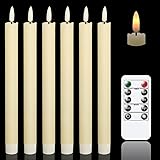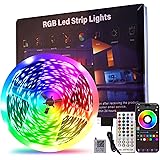Reports indicate that over 65% of homeowners prioritize personalized spaces, seeking unique elements that reflect their individual style rather than mass-produced alternatives. The accompanying video, a demonstration of creative craftsmanship, perfectly encapsulates the spirit of bespoke home decor projects. Witnessing the careful process of transforming raw materials into a functional and aesthetically pleasing piece is often the catalyst for many DIY enthusiasts to embark on their own ventures.
Engaging in DIY home decor projects, much like the one showcased, offers numerous advantages. Beyond the significant cost savings, which can be substantial, these endeavors provide an unparalleled opportunity for customization and a profound sense of accomplishment. Understanding the underlying principles and advanced techniques can elevate a simple idea into a sophisticated addition to any living space.
The Art of Bespoke Home Decor Projects: Industrial-Chic Shelving
The allure of industrial-chic design lies in its raw authenticity and functional elegance, blending robust materials with minimalist forms. Consider, for instance, a multi-functional floating shelf unit, meticulously crafted from reclaimed hardwoods and structural steel elements, then integrated with ambient LED lighting. Such a project moves beyond basic storage, becoming a focal point that enhances both utility and aesthetic appeal in a contemporary home.
Selecting Premium Materials for Durability and Aesthetics
The foundation of any superior DIY project is material selection. For our industrial-chic shelving, discerning choices involve both the timber and metal components. Reclaimed oak or walnut, often sourced from old barns or factories, not only offers unparalleled character with its inherent imperfections and patina but also contributes to sustainable building practices. Using such materials can reduce environmental impact significantly, aligning with modern ecological mandates.
Furthermore, structural steel, whether in square tubing or flat bar form, provides the necessary rigidity and signature industrial aesthetic. The choice of finish, from a raw, waxed steel to a powder-coated matte black, dictates the final visual impact. Corrosion resistance is paramount, dictating the necessity for appropriate sealing or painting, especially in humid environments where oxidation might compromise structural integrity and appearance over time. High-quality fasteners, often hex-head or carriage bolts, ensure robust connections, embodying the utilitarian beauty of industrial design.
Sophisticated Design and Spatial Integration
Designing a floating shelf system requires more than just determining dimensions; it involves meticulous spatial planning and an understanding of load-bearing capacities. Ergonomic considerations dictate shelf depth and height, ensuring accessibility and visual balance. For example, a standard 10-12 inch depth is often optimal for books and decorative objects, preventing items from being lost at the back while maintaining a sleek profile.
Moreover, integrating the unit seamlessly into the existing interior architecture is crucial. This involves assessing wall composition—whether it’s drywall over studs, plaster, or concrete—to specify appropriate anchoring methods. Toggle bolts, lag screws into studs, or concrete anchors each offer specific load ratings, which must be carefully calculated. Industry standards suggest that a well-anchored floating shelf should support at least 50-70 pounds per linear foot, contingent on proper installation and wall substrate, providing substantial utility without compromising safety.
Advanced Fabrication Techniques for Precision and Strength
The fabrication process for a project of this caliber demands precision woodworking and metalworking skills. For the wooden components, this involves accurate cutting, planing, and sanding to achieve desired dimensions and a smooth finish. Joinery methods, such as dado cuts or mortise and tenon joints, provide superior strength and a cleaner aesthetic compared to simple butt joints.
Metal fabrication requires proficiency in cutting, drilling, and welding steel. TIG welding, for instance, offers clean, strong welds with minimal spatter, ideal for exposed structural elements where aesthetics are important. Post-welding processes, including grinding and polishing, are essential to remove sharp edges and prepare the surface for finishing. Each step, from initial cuts to final assembly, influences the structural integrity and visual finesse of the completed unit.
Illuminating Spaces: Integrated LED Lighting Solutions
The incorporation of integrated LED lighting transforms a functional shelf into a mood-setting design feature. Low-profile LED strip lights, concealed within routed channels on the underside of shelves or along the back panel, provide ambient or accent illumination. These solutions are energy-efficient, with many modern LED strips consuming as little as 5-10 watts per meter while offering thousands of hours of operation.
Wiring these systems demands a basic understanding of low-voltage electrical principles. A 12V or 24V DC power supply, carefully concealed, powers the LEDs, which can be controlled via an in-line switch, a smart home hub, or even motion sensors. The color temperature of the LEDs can also be selected to complement the existing room lighting, ranging from warm white (2700K-3000K) for a cozy atmosphere to cool white (4000K-5000K) for task-oriented illumination. Proper cable management and insulation are essential for both safety and a professional finish.
Finishing Touches: Enhancing Longevity and Visual Appeal
The finishing process is where the raw materials truly come to life, protecting them and enhancing their natural beauty. For wood, various options exist, including oil finishes that penetrate and nourish the wood, varnishes that provide a durable surface coating, or stains that alter the color while allowing the grain to show through. A multi-coat application, lightly sanding between coats, builds depth and resilience.
Steel components benefit from clear coats to prevent rust or, if a different color is desired, powder coating offers an extremely durable and uniform finish resistant to chipping and scratching. The attention to detail in these final stages elevates the entire project, ensuring longevity and a professional-grade appearance. This meticulous approach to bespoke home decor projects ensures that the final product is not only beautiful but also built to last.










